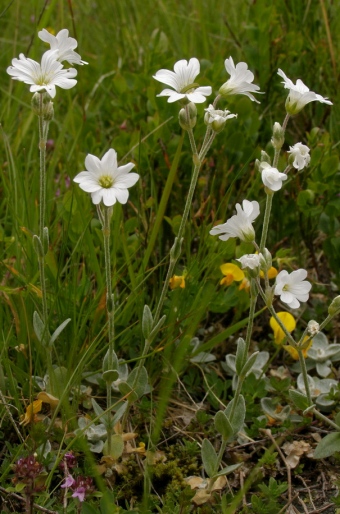Syn.: Cerastium arvense var. latifrons Urum., Cerastium moesiacum f. rhodopeum Georgiev, Cerastium rhodopeum (Georgiev) Georgiev
Family: Caryophyllaceae Juss.

Distribution: Mountains of the Balkan Peninsula, from Bosnia, southern Serbia, Stara planina Mts. in Bulgaria to northern Greece.
Ecology: It grows in mountain pastures and alpine grasslands, on crystalline bedrock, but also on limestones (then mainly on deeper soils). Mostly from 1300 to 2200 m a. s. l.

Description: Laxly caespitose, 20–40 cm high perennial. Non-flowering basal shoots with broadly elliptic to obovate, tomentose leaves. The stem leaves up to 25 × 10 mm, elliptical to broadly lanceolate. The flowers many, in an elongated cyme, bracts and sepals obtuse, with wide scarious margins, sparingly tomentose or sericeous. The petals more than twice as long as sepals. The capsule 10–12 mm, teeth almost erect, with revolute margins. The seeds 1–1,6 mm, rugose.





These images were taken in Albania, the Prokletije, Maja e Zeze (July 5, 2011).


